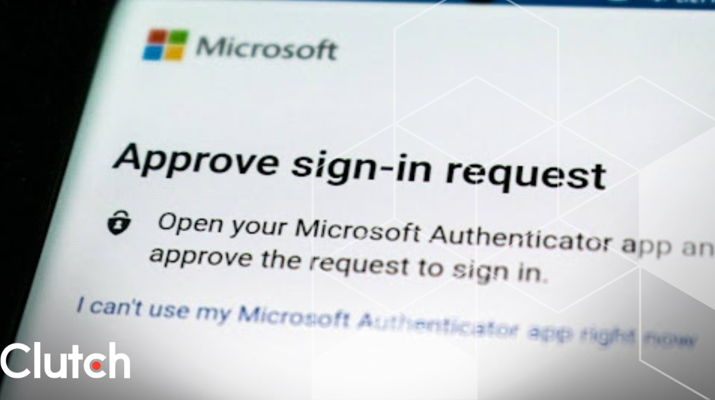

Updated December 18, 2025
Having a budget in place will help you understand the costs involved in the app development process and helps your business prioritize the work needed to deliver a functional mobile app.
Updated 11/15/2023
In the age of social media and consistent online interactions, mobile apps have continued to become a popular tool for all generations.
Looking for a Mobile App Development agency?
Compare our list of top Mobile App Development companies near you
Having a quality mobile app with the right functionality is critical for businesses during this time.
Mobile apps help with providing insightful customer data, promoting brand awareness, building a loyal set of customers, and giving an opportunity to stand out from competitors.
If your company doesn’t have a functional mobile app, it is time to start those conversations with stakeholders.
Before beginning the development process, businesses need to factor in the cost of building a mobile application, which means taking the time to set up an app development budget.
This article will prepare your company for the entire app development process by providing guidance on bringing your new app to life – ideally, within budget.
Creating a realistic app development budget requires businesses to understand the factors contributing to a successful mobile app.
The following practices are involved in the cost of building a mobile app:
Using these categories, break down the project into distinct phases and stages to start forming your budget. The development phase involves coding and implementation, while the development stage encompasses planning, design, and testing.
Not all apps are the same — most decisions will be made on certain requirements than others. But, it is important to factor all of these elements into whether you are building a complex app or a simple framework.
Building a budget for any project involves selecting your top priorities, learning how they can be addressed, and then factoring in all of the costs for production.
Businesses can build a solid app development budget by following these steps:
These steps will help your team bring your app idea to life.
The first step for any budget is to look at your business and find out how much your company is willing or able to spend.
Your business is spending money on areas outside of a mobile app — so it is important to think about those expenses as priorities, and splice down the budget that way. Once you have an average cost for your budget, you can then do research on what you can adequately spend money on.
This process will likely take a few iterations, especially if this is your first time building a mobile app. The cost of app development varies based on a variety of factors, so it is imperative to research what’s happening in the industry.
Choosing the right development platform and language is crucial in determining the cost of your app project. Java and Swift are popular choices for native development, while cross-platform frameworks like React Native and Flutter offer cost-effective solutions by allowing code-sharing across different platforms.
However, the choice of platform can impact development costs, and it's essential to weigh the benefits of a native approach against the efficiency gains of cross-platform development.
Depending on its importance, you might need to allocate funds from other areas or pause your mobile app build. All of these are perfectly normal, but you can still make plans regardless of the audit’s outcome.
An app development cost breakdown can start with what type of mobile app you want for your company.
There are three basic types of mobile apps.
Explore these options as a key element of your app development budget planning:
The choice of frameworks and tools can also impact the budget. Using Amazon Web Services (AWS) for hosting and backend services may incur additional costs, while opting for custom app development or leveraging cross-platform frameworks like Flutter and React Native can offer cost advantages. Carefully evaluating the pros and cons of each option alongside general types of apps will keep your budget in check.
Select the mobile app type that will work best with your business goals and fits your target audience.
Your app's goal can impact your budget.
Most mobile apps aim to increase brand visibility, but all apps should also have unique reason behind their build.
During the discovery phase of an app project, team members should get in a room and discuss the reasoning for taking on an app project. Is the time and money that goes into the app enough to impact and benefit the business? Show why.
Other app goals could be:
Based on your app’s goal, you can include specific app features that will further meet that goal, like, a payment gateway. All of that goes into budget planning.
Another way to think about your app’s goals is what your competitors are doing with their mobile app development projects.
Spend time browsing what your competitors have to offer in the app store. Take a look at some of their basic features and see how to improve that messaging to connect better with customers.
It is also important to note that these competitors do not need to be in the same industry as you.
For example, if you are a flower shop looking to build a mobile app to make payment processing easier, you can browse apps with similar functionalities and see how they work.
You can search online or browse chart rankings on the Apple or Google Play store to find these apps. From there, you can list out their features, and even browse their reviews to see what customers are saying.
If you find a negative review about a competitor’s app that mentions the lack of app complexity, your team can make a note of that in your research, which will directly correlate to your app development budget.
It is more than likely that your business will be outsourcing the mobile app development work, whether it is in the US or in another country like India. But there are many different options for your mobile app that all factor into your budget.
You can hire the following to build your mobile application:
Geographical considerations, such as hiring an app development agency in Europe, can influence the budget due to variations in labor costs and regulatory factors. Understanding the regional dynamics can help you make informed decisions about outsourcing development, ensuring that the chosen approach aligns with both your project goals and budget constraints.
Partnering with an app development agency introduces an additional layer of cost, but it can streamline the development process and provide access to a skilled team of professionals. Each of these resources can provide a unique perspective, skillset, and cost estimate. Think critically about which resource will greatly impact your budget and final cost.
Think critically about which resource will greatly impact your budget and final cost.
When crafting your budget, consider the top features that will provide the most value to your customers.
In a 2022 report on the Manifest, it was found that wearable device compatibility (92%), voice search (90%), and machine learning (90%) were the features most satisfying to small businesses.
These might seem like advanced features that won’t fit in your app development budget, but that’s not necessarily true.
The features and functionality of your app play a significant role in shaping the budget. Gaming apps, on-demand services, e-commerce platforms, and healthcare applications may require specific functionalities that can influence development costs. Additionally, integrating in-app purchases or creating a social media app with intricate features may add complexity to the project, impacting both time and budget considerations.
More features is not always better - the cleaner and simpler your app’s user interface is, the better the user experience is for your users.
Think about the type of app you want to build, and what app functionalities make sense.
For example, if you’re building a social networking or a delivery app, you might want to include push notifications to keep users informed. But, if you’re a startup just building a basic app for communication, you might only need features like user profiles and chat buttons.
Users will be turned off and leave your app if it has a cluttered interface, so thinking about which features actually make sense will save you money in the long run.
Once your app is launched, the work isn’t finished — make sure that the future costs for maintenance, quality assurance, promotion, and more are factored into your budget and the app’s total cost.
It is important to note that maintenance is an ongoing process - the more features an app has, the more QA it will need. If your business abandons a mobile application after release, the app will become outdated.
As more and more apps emerge, your app needs to innovate – whether through updates, bug fixes, or adding newer features (when the budget allows for it).
Testing should happen frequently as well to preemptively fix any issues or delays.
The work is just beginning when your company’s app hits the app store - make sure that is clear within your app development budget.
Now that your team knows what goes into a budget for an app development project, it is time to test it out for yourselves.

Download the template for your company’s app development budget
Several factors affect the cost of mobile app development, including:
Considerations such as API integration, software development intricacies, and the need for third-party integrations can contribute to the overall cost. The optimization of code and UI design are crucial elements that affect not only the development timeline but also the efficiency and performance of the application. Determining the number of screens and ensuring a seamless user experience are vital factors that can impact the budget in the development process.
The cost of app development can change as the development process evolves. Teams should look for changes regarding an app development cost breakdown.
Learn more about app development costs in Clutch's 'App Development Pricing Guide.'
Once your budget is squared away and you’ve hired a mobile app development company, these are the steps to build your company’s mobile app:
A successful mobile app is just around the corner for your business.
On a tight budget and thinking about hiring a freelance app developer? Read 'When to Hire a Freelance App Developer vs. App Development Company' before making your decision.
If your company doesn’t have an iPhone or Android app available for customers, it is time to reconsider.
When crafting an app development budget, all stakeholders and team members involved must be upfront about what’s necessary for the app, but be realistic about the costs.
Establishing a realistic app development budget involves understanding the various cost components. The application development cost encompasses expenses related to coding, design, testing, and deployment. Seeking a cost-effective solution doesn't mean compromising on quality; rather, it involves making informed decisions about the technologies and features that align with your project's goals while staying within budget constraints.
To build a complete app development budget, consider your resources, ideal app features, your target audience, your competition, and more.
Plan an app development budget using our template to get your company on the right track.
Looking for help with your mobile app build? Hire one of the mobile app development teams on Clutch.


